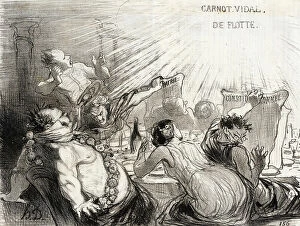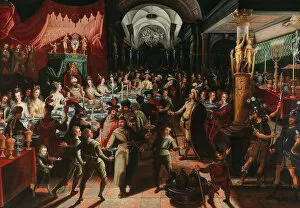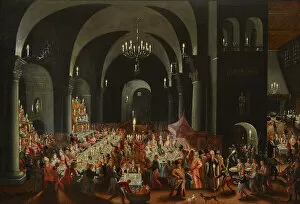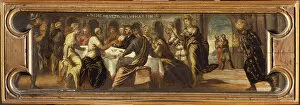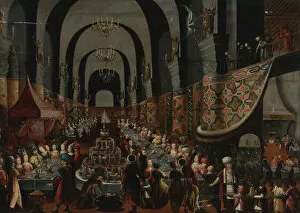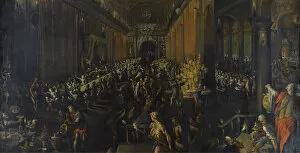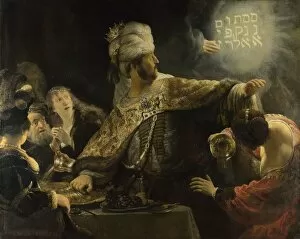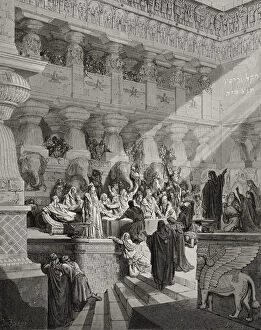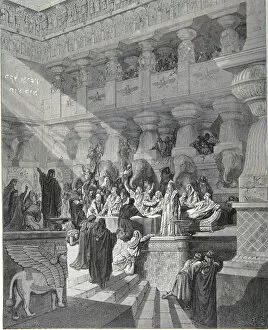Belshazzars Feast Collection
"Belshazzar's Feast: A Spectacle of Excess and Divine Intervention" Step into the opulent world of Belshazzar's Feast
For sale as Licensed Images
Choose your image, Select your licence and Download the media
"Belshazzar's Feast: A Spectacle of Excess and Divine Intervention" Step into the opulent world of Belshazzar's Feast, as depicted by renowned artists such as Bartholomaus Strobel, Tintoretto, Frans Francken the Younger, Frederik van Valckenborch, and Rembrandt van Rhijn. This biblical tale from the book of Daniel comes to life in vivid detail through their masterful creations. In these captivating works of art, we witness the grandeur and decadence of King Belshazzar's banquet. The scene is set with lavish decorations, sumptuous feasts laid out on golden tables adorned with precious jewels. Guests revel in their finery while indulging in an abundance of food and wine. However, amidst this extravagant display of wealth and excess hangs a sense of impending doom. As Belshazzar raises his goblet to toast his gods with blasphemous arrogance, a mysterious hand appears and begins writing on the wall. Fear grips the attendees as they struggle to comprehend this supernatural occurrence. The tension escalates further when Daniel enters the scene – a wise prophet who possesses divine insight. With unwavering confidence, he interprets the cryptic message inscribed upon the wall: "Mene Mene Tekel Upharsin. " These words foretell Belshazzar's downfall and signify that his kingdom has been weighed in God's balance and found wanting. Through these mesmerizing artworks spanning centuries, we are transported back to this pivotal moment where mortal hubris clashes with divine judgment. Each artist brings their unique style to capture both human vulnerability and celestial intervention within this historical narrative. Whether it be Strobel's attention to intricate details or Tintoretto's dramatic use of light and shadow or even Dore’s evocative engravings – all convey a profound message about pride before destruction.

